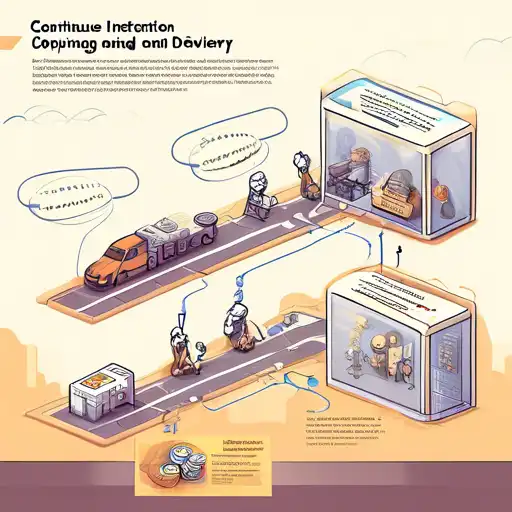What is Continuous Integration and Delivery?
Continuous Integration (CI) and Continuous Delivery (CD) are pivotal practices in modern software development, aimed at improving the speed and quality of software releases. CI/CD automates the integration of code changes from multiple contributors into a single software project, ensuring that new code does not break the existing codebase.
The Benefits of CI/CD
Implementing CI/CD brings numerous benefits to development teams, including:
- Reduced integration problems
- Faster release cycles
- Higher quality software
- Improved team productivity
By automating the build, test, and deployment processes, teams can focus more on development and less on the logistics of software release.
How CI/CD Works
CI/CD pipelines are the backbone of these practices. A typical pipeline includes several stages:
- Code is committed to a version control repository.
- The CI server automatically triggers a build and runs tests.
- If the build and tests pass, the code is deployed to a staging environment.
- After staging, the code is ready for production deployment, often automated in CD.
This process ensures that only code that passes all tests is deployed, minimizing the risk of errors in production.
Best Practices for Implementing CI/CD
To maximize the benefits of CI/CD, consider the following best practices:
- Maintain a single source repository.
- Automate the build process.
- Make your build self-testing.
- Every commit should build on an integration machine.
- Keep the build fast.
- Test in a clone of the production environment.
- Make it easy for anyone to get the latest executable version.
- Everyone can see what's happening.
- Automate deployment.
Adhering to these practices can help teams avoid common pitfalls and ensure a smooth CI/CD process.
CI/CD Tools and Technologies
There are numerous tools available to facilitate CI/CD, including Jenkins, Travis CI, CircleCI, and GitHub Actions. Each tool offers unique features, but all aim to automate the software release process. Choosing the right tool depends on your project's specific needs and the team's expertise.
For more insights into selecting the right CI/CD tools, check out our guide on Choosing the Right CI/CD Tool for Your Project.
Conclusion
Continuous Integration and Delivery are essential practices for any team looking to improve their software development process. By automating the integration and delivery processes, teams can achieve faster releases, higher quality software, and improved productivity. Whether you're just starting with CI/CD or looking to optimize your existing pipeline, understanding these concepts is the first step toward success.
For further reading on optimizing your development workflow, explore our article on Optimizing Your Development Workflow with DevOps Practices.
